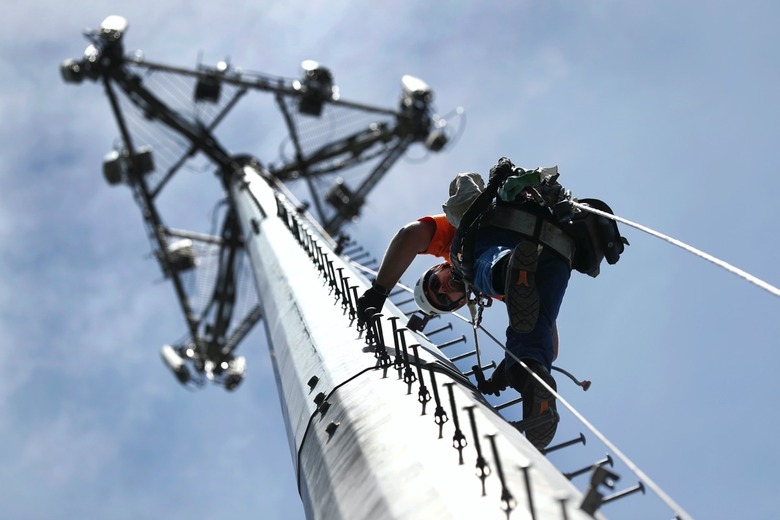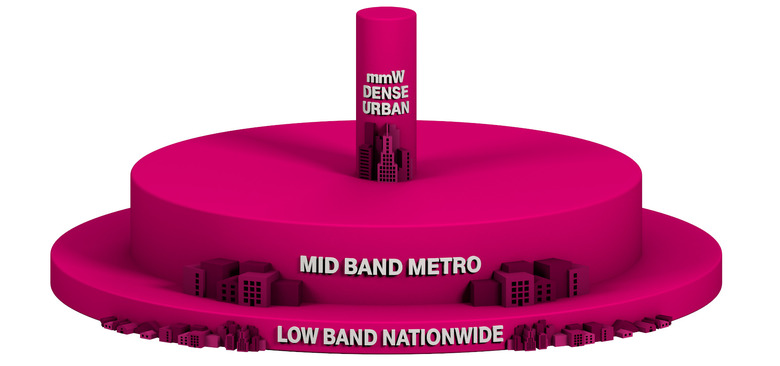Sub-6 Vs C-Band Vs mmWave: 5G Frequencies And Buzzwords Explained
5G is rolling out around the country, bringing faster download speeds, lower latency, and more. But as with any new technology, 5G is confusing, and it has a ton of buzzwords associated with it. As carriers roll out their 5G networks you'll continue to hear these buzzwords.
But what do they actually mean? What's the difference between Sub-6 and mmWave? And what does any of this mean for you as 5G networks continue to roll out?
We've put together a guide on some of the most used 5G buzzwords and technologies. Here's everything you need to know.
Sub-6
Like all cellular wireless technologies, 5G works through radio waves. Radio waves are essentially electromagnetic waves that radiate a certain number of times per second. The number of times per second that a radio wave radiates is referred to as its frequency.
5G, in particular, works through a number of different frequency bands. That means that it uses both low and high-frequency radio waves to work. This is a good thing. Lower frequency waves can travel further distances, meaning that one cell tower could cover a few miles radius in 5G coverage. But there's a downside — lower frequencies can't carry quite as much data as higher-frequency radio waves that can't travel as far, or penetrate obstacles quite as well.
Sub-6 radio waves are radio waves that are lower than 6GHz — or radio waves that radiate fewer than 6 billion times per second. Many of these frequencies are the same frequency radio waves that were used in previous generations of cellular connectivity.
It's important to note that "frequencies under 6GHz" is actually a very broad definition — and when it comes to 5G, basically includes all but the highest frequencies. All three of the carriers deployed so-called "nationwide" 5G networks using Sub-6 technologies, meaning that while those networks were available around the country, they weren't that much faster than 4G networks before them.
Mid-Band
Mid-band frequencies are frequencies that aren't quite as high as the highest frequencies used for 5G, but not as low as the so-called "low-band" frequencies that range from 600 to 850MHz, or million radiations per second. Frequencies used for mid-band generally range from 1GHz to 6GHz. That's right — technically, mid-band frequencies are still included the larger umbrella of "Sub-6."
Generally, mid-band frequencies can travel relatively far distances, and still offer fast download speeds. They're a good middle ground, allowing carriers to deploy a few cells to cover cities, and still deliver excellent connections. Many consider mid-band frequencies to be the key to great 5G networks.
C-Band
C-band is where things really start to get a little confusing. Globally, the C-band refers to frequencies between 4 and 8GHz. In the U.S., however, carriers don't have access to all those frequencies, and right now, they're only using frequencies between 3.7 and 3.98GHz. That means that while mid-band is a subset of Sub-6, C-band in the U.S. is a subset of mid-band frequencies.
There are good reasons why C-band is so important to the rollout of 5G. Most of the lower frequencies deliver connections that aren't much faster than 4G, if at all. Higher frequencies, on the other hand, are either in-use elsewhere, or too high to really cover distances.
Eventually, carriers could use a much larger range for C-band 5G networks. Currently, lower frequencies are used by T-Mobile for mid-band networks, as well as some 4G networks. Higher frequencies are used by the FAA, and 5GHz is used in Wi-Fi.
mmWave (millimeter wave)
mmWave is an entirely different flavor of 5G. That's because mmWave connections use frequencies above 24GHz. These frequencies can't travel very far or penetrate obstacles like lower frequencies can. But, they can deliver extremely fast connections that might make them useful in certain situations. For example, mmWave cells can be deployed in stadiums, densely populated areas of a city, and so on.
Initially, Verizon and AT&T relied on mmWave for their 5G networks, but soon shifted their attention to lower frequencies to deliver truly nationwide networks. Eventually, all of the carriers will continue to build out their mmWave networks, while will be able to deliver multi-gigabit-per-second download speeds.
Latency
Is latency another type of 5G frequency? No, thankfully we've run through all the 5G frequencies used right now. Latency is actually something else entirely. Latency refers to the amount of time it takes for packets of data to travel between two points. On 4G networks, latency was usually between 60 and 100 milliseconds. Latency on 5G networks should end up being in the single-digits or lower, in milliseconds. That allows for things like latency-free game-streaming, and for cars to be able to make decisions in ultra-short time. Eventually, the dream of surgeons being able to perform surgery remotely in another country from the patient could become a reality. That's all thanks to low latency. That, however, may take some time.
Does my phone support all of these types of 5G?
Well...maybe! Many flagship phones released in the last year or so do support all these types of 5G, including recent iPhones and Samsung Galaxy phones. But everything else probably does not support all of the different types of 5G.
Many lower-end phones don't actually support anything more than lower frequencies, meaning that while they can connect to 5G networks, they can't quite get the super-fast speeds that 5G networks promise to deliver. Over time, all phones will support all flavors of 5G. If you're not quite sure what your phone supports, it's worth reaching out to your phone's manufacturer.


